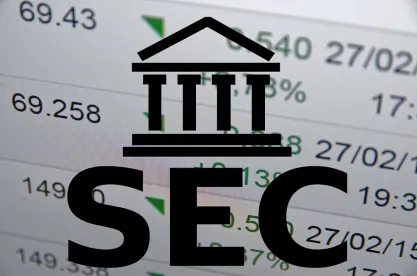Highlights
The SEC has proposed monthly short position reporting by institutional investment managers; public comment period is open until the later of April 26 and 30 days after publication in the Federal Register
Managers would report confidentially on new Form SHO, following which the SEC would publish aggregated monthly short data
Proposed amendment to Regulation SHO would add “buy-to-cover” order-marking requirement for broker-dealers
The U.S. Securities and Exchange Commission (SEC) continues its rollout of proposals to collect more data from hedge funds and other asset managers about their trading and portfolio-management activities. The latest initiative focuses on short-selling disclosure.
The SEC has proposed adding new Rule 13f-2 under the Securities Exchange Act of 1934. Rule 13f-2 and its associated Form SHO would require “institutional investment managers” to report monthly to the SEC specified data concerning their short positions above a certain threshold in individual equity securities. Managers would submit this information confidentially. The SEC would use the information received from reporting managers to publish monthly aggregate data about large short positions with respect to individual securities.
SEC Chair Gary Gensler has stated that the proposed rules would give the investing public “more visibility into the behavior of large short sellers” and improve the SEC’s ability to “understand the role short selling may play in market events.”
Relatedly, the SEC has proposed adding new Rule 205 to Regulation SHO under the Exchange Act. The rule would require a broker-dealer to mark a purchase order as “buy-to-cover” if the purchaser had a short position in the security when the purchase order was entered.
The SEC’s proposed rules are subject to a public comment period ending on the later of April 26 and 30 days after publication in the Federal Register.
Background
Congress added Section 13(f)(2) to the Exchange Act in 2011 as part of its Dodd-Frank legislation. Section 13(f)(2) instructs the SEC to prescribe rules providing for at least monthly public disclosure of the aggregate amount of short sales in particular issuers’ equity securities.
Proposed Rule 13f-2 and Form SHO are the SEC’s response – admittedly a rather belated one – to that statutory directive. The SEC’s decision to take up its rulemaking now appears at least in part motivated by the view that recent instances of market volatility indicate a lack of transparency into the behavior of short-sellers. [i]
Scope of Proposed Rule 13f-2
A useful way to look at proposed Rule 13f-2 and Form SHO is as the short-side analog to the current long-focused Form 13F reporting system. [ii]
Investment Managers Potentially Subject to Proposed Reporting Requirement
An “institutional investment manager” is the type of asset manager that potentially would be subject to Rule 13f-2 and thus to reporting on Form SHO. The term would have the same meaning as in the Form 13F context: either (i) an entity that invests in or buys and sells securities for its own account or (ii) an entity or a natural person that exercises investment discretion with respect to the account of any other entity or natural person. A private fund manager typically is an institutional investment manager due to the second prong of that definition. A manager need not be a registered investment adviser to have institutional investment manager status.
Size of Short Position That Would Trigger Reporting Obligation
An institutional investment manager would be subject to proposed Rule 13f-2 and Form SHO if the manager (including all accounts over which the manager or any person under its control has investment discretion) met either of two “gross short position” thresholds on any settlement date in a given calendar month:
-
Threshold A – Short Position in Shares of Reporting Issuer. The first reporting threshold – which the SEC calls “Threshold A” – relates to any equity security that the issuer has registered under Section 12 of the Exchange Act, or for which the issuer is required to file reports pursuant to Section 15(d) of the Exchange Act. This primarily means an equity security that the issuer has listed for trading on a U.S. securities exchange. [iii] For an equity security of such a reporting issuer, an institutional investment manager would be subject to reporting for a given calendar month if it had either:
-
A gross short position in the security of at least $10 million at the close of regular trading on any settlement date during the calendar month; [iv] or
-
An average gross short position for the calendar month equal to at least 2.5 percent of the outstanding class of equity security. [v]
-
The two-pronged approach of Threshold A therefore would measure the size of the short position in question relative to both dollar value and shares outstanding. The SEC explains that this approach is intended to ensure that a substantial short position in either a large-cap or a small-cap equity security could trigger a reporting obligation.
-
Threshold B – Short Position in Shares of Non-Reporting Issuer. The second reporting threshold, referred to by the SEC as “Threshold B,” relates to any equity security that the issuer has not registered under Section 12 of the Exchange Act and for which the issuer is not required to file reports pursuant to Section 15(d) of the Exchange Act. This category essentially relates to over-the-counter (OTC) securities. For an equity security of such a non-reporting issuer, an institutional investment manager would be subject to reporting for a given calendar month if it had a gross short position in the security of at least $500,000 at the close of regular trading on any settlement date during the calendar month. [vi]
The SEC notes that Threshold B is designed to trigger reporting by managers that have substantial short positions in a non-reporting issuer, even if the position is relatively small compared to the issuer’s market cap.
“Gross Short Exposure”
For purposes of the reporting thresholds, the term “gross short position” means simply the number of shares of the equity security that are held short. The manager would not net out any offsetting economic positions such as shares held long or derivative instruments providing synthetic long exposure. [vii] Nor would synthetic short exposure count toward calculation of the gross short position.
Proposed Form SHO
If an institutional investment manager determined that it met a threshold degree of gross short exposure with respect to an equity security of any issuer in a given calendar month, the manager would have to file a Form SHO within 14 calendar days after the end of that month. [viii] The Form SHO would include information about each equity security in which the manager had met a reporting threshold for the month in question. (For example, if the manager met a threshold gross short position in the common stock of both issuer A and issuer B, the Form SHO would include information about the manager’s gross short position in each issuer.)
Content of Form SHO
Form SHO would consist of a cover page and two information tables. The cover page would indicate, among other things, the manager’s name and the month for which the Form SHO was being filed.
-
Information Table 1. Table 1 would relate to the manager’s end-of-month gross short position with respect to each reported equity security. It would identify each equity security for which information was being reported, and would disclose with respect to each equity security: (i) the manager’s end-of-month gross short position in terms of number of shares; (ii) the manager’s end-of-month gross short position in terms of dollar value; and (iii) the extent to which the end-of-month gross short position was fully hedged, partially hedged, or not hedged. [ix]
-
Information Table 2. If Table 1 provides a month-end snapshot, Table 2 would provide a moving picture of trading activity that affected the size of the manager’s gross short positions over the course of the month. Specifically, Table 2 would indicate each date during the month on which the manager settled a trade in each reported equity security. With respect to each of those settlement dates, the manager would disclose the number of shares that were, among other things: (i) sold short; (ii) purchased to cover an existing short position; (iii) acquired in a call option exercise that reduced or closed a short position; (iv) sold in a put option exercise that created or increased a short position; (v) sold in a call option assignment that created or increased a short position; or (vi) acquired in a put option assignment that reduced or closed a short position.
The SEC states that the intra-month activity information elicited by Table 2 would provide the SEC with “additional context and transparency” into how and when short positions are created, increased, closed out, or reduced.
Monthly Publication of Aggregate Data by SEC
The SEC plans to publish aggregated information regarding each equity security reported by managers on Form SHO for a given calendar month. The SEC would publish this aggregated information within one month following the end of the reporting calendar month.
Confidential Treatment for Information Reported on Form SHO
Proposed Form SHO provides that all information that would reveal the manager’s identity is deemed subject to a confidential treatment request. The SEC expects that manager confidentiality also will be protected by the agency’s delayed publication of aggregated data; the SEC therefore does not anticipate granting confidential treatment requests regarding information from which aggregated data will be derived.
Proposed Rule 205 of Regulation SHO
In conjunction with proposed Rule 13f-2 and Form SHO, the SEC has proposed to revise broker-dealers’ order-marking obligations under Regulation SHO. Broker-dealers currently are required to mark only sell orders (in each case as long, short, or short exempt.) Proposed Rule 205 of Regulation SHO would introduce a new “buy-to-cover” marking requirement applicable to purchase orders.
Proposed Rule 205 would require a broker-dealer to mark a purchase order as buy-to-cover if, at the time of order entry, the purchaser had a gross short position in the relevant security in the specific account for which the purchase was being made at that broker-dealer. An order would be marked buy-to-cover regardless of the size of the order in relation to the size of the purchaser’s gross short position in the account, and regardless of whether the gross short position was offset by a long position held in the purchaser’s account. [x]
Broker-dealers also would be required to report buy-to-cover orders to the Consolidated Audit Trail.
The SEC believes that having buy-to-cover records would be useful “in reconstructing market events, and … in identifying and investigating any potentially abusive trading practices including any potential manipulative short squeezes.”
The Bigger Picture
The SEC maintains that the information generated by its proposed short-reporting rules would benefit investors and boost the SEC’s market-oversight ability by producing information that is not captured by existing reporting requirements. This is the same theme the SEC has sounded in other recent rule proposals concerning, for example, expanding beneficial ownership reporting under Section 13(d) of the Exchange Act, creating new quarterly financial disclosure obligations for private fund advisers, and collecting additional information under Form PF.
It is at least an open question whether the proposed short-position reporting rules would produce the benefits the SEC expects. In particular, a substantial amount of short-position information is already available, either free to the public or for a modest fee to professional investors.
There is also the question of the potential cost associated with the proposed new disclosure regime. Beyond direct financial and logistical compliance costs, indirect costs to managers could include copycat trading, exposure to retaliation by issuers who reverse-engineer the SEC’s published aggregate data to identify individual managers and, perhaps, the encouragement of short squeezes. We expect that these and similar cost-benefit issues will get a robust airing during the public comment period.







 />i
/>i

